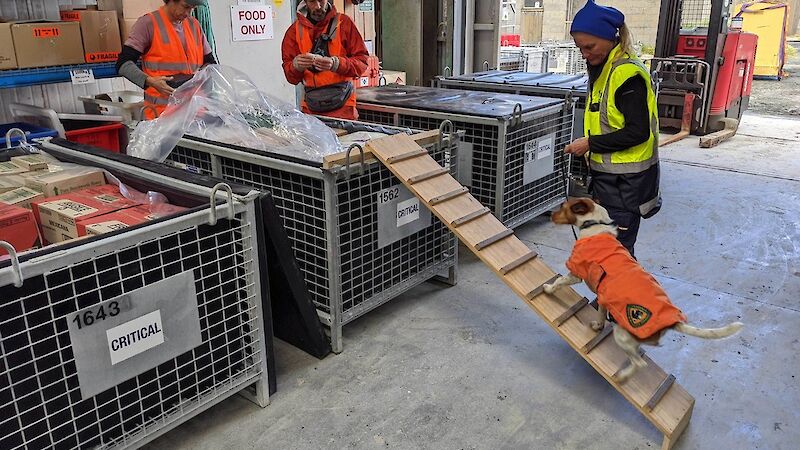Cargo biosecurity process
If you are involved in supplying, procuring, consigning, consolidating or packing cargo for the Australian Antarctic Program, you must ensure all items are clean and free of biosecurity risk material before delivery to the AAD.
Cargo that is shipped or flown to and from the Antarctic or sub-Antarctic Stations, is processed through biosecurity screening. The AAD's Supply Chain Operations section undertake three measures to prevent the introduction and/or spread of biosecurity risk materials.
- Biosecurity measure 1 – External inspection of cargo surfaces
- Biosecurity measure 2 – Internal inspection of cargo transport units, cargo consolidation and packing, and internal fogging of cargo transport units
- Biosecurity measure 3 – External inspection and fogging of containers and break bulk cargo
The AAD Kingston Warehouse and the Cargo and Biosecurity Centre (CBC) maintain an ongoing pest control program designed to intercept any insects, rodents or pests. The CBC also maintain additional measures such as fogging and rodent dog-detection services. If you have cargo that requires an exemption from biosecurity treatments, please contact cargo.planning@aad.gov.au before your cargo is delivered to the AAD, and ensure cargo is clearly labelled on delivery so that it can be stored away from areas subject to fogging processes.
Biosecurity Risk Materials (BRM)
Biosecurity risk materials (BRM) are any materials that can pose a risk to the Antarctic and sub-Antarctic environments.
This includes items such as:
- Animals and evidence of animal incursion, such as feathers, fur, faeces, fluids and carcasses
- Insects and evidence of insect incursion, such as nests, spider webs, wings, shells and casings
- Plant materials, such as seeds, leaves, bark, branches, roots, straw and flowers
- Dirt, soil, fungi and mould
- Water, such as rainwater pooling in indentations and on top of cargo that has been stored outside
Check:
- Used camping and hiking equipment
- Velcro fastenings and pockets on outdoor clothing
- Footwear: in the lacings and crevices around the tongue, as well as the soles
- Items such as wheat bags, herb growing kits and grass heads/chia pets
- Pipework/tubing and other bundles with open ends
- The tread of tyres and tracks, as well as the undercarriage of vehicles and equipment
- Cargo that has been stored outside
- That timber is treated, clean, and free of bark, borer holes or other evidence of insect activity
If biosecurity risk materials are identified, remove contaminants before delivering your cargo to Supply Chain Operations; cargo that is delivered unclean may be turned away to avoid contaminating other cargo.
Don’t pack a pest; take it new or take it clean
Help us protect the Antarctic and sub-Antarctic environments:
- Ensure you use new or clean existing boxes/containers
- Ensure all items inside boxes/containers are clean prior to being packed
- Ensure you properly seal boxes/containers to prevent potential BRM incursion
- Don’t leave packed cargo in exposed areas for long periods
- All waste on stations must be returned to Australia, help minimise waste by reducing packing materials
- Use environmentally friendly packaging and remove any loose chips, beads or finely shredded materials
- Some items are prohibited, unless under a permit. These include polystyrene beads/chips, radio-isotopes and pesticides
Remember that all cargo must arrive to the AAD clean and free from any biosecurity risk materials or prohibited items.

